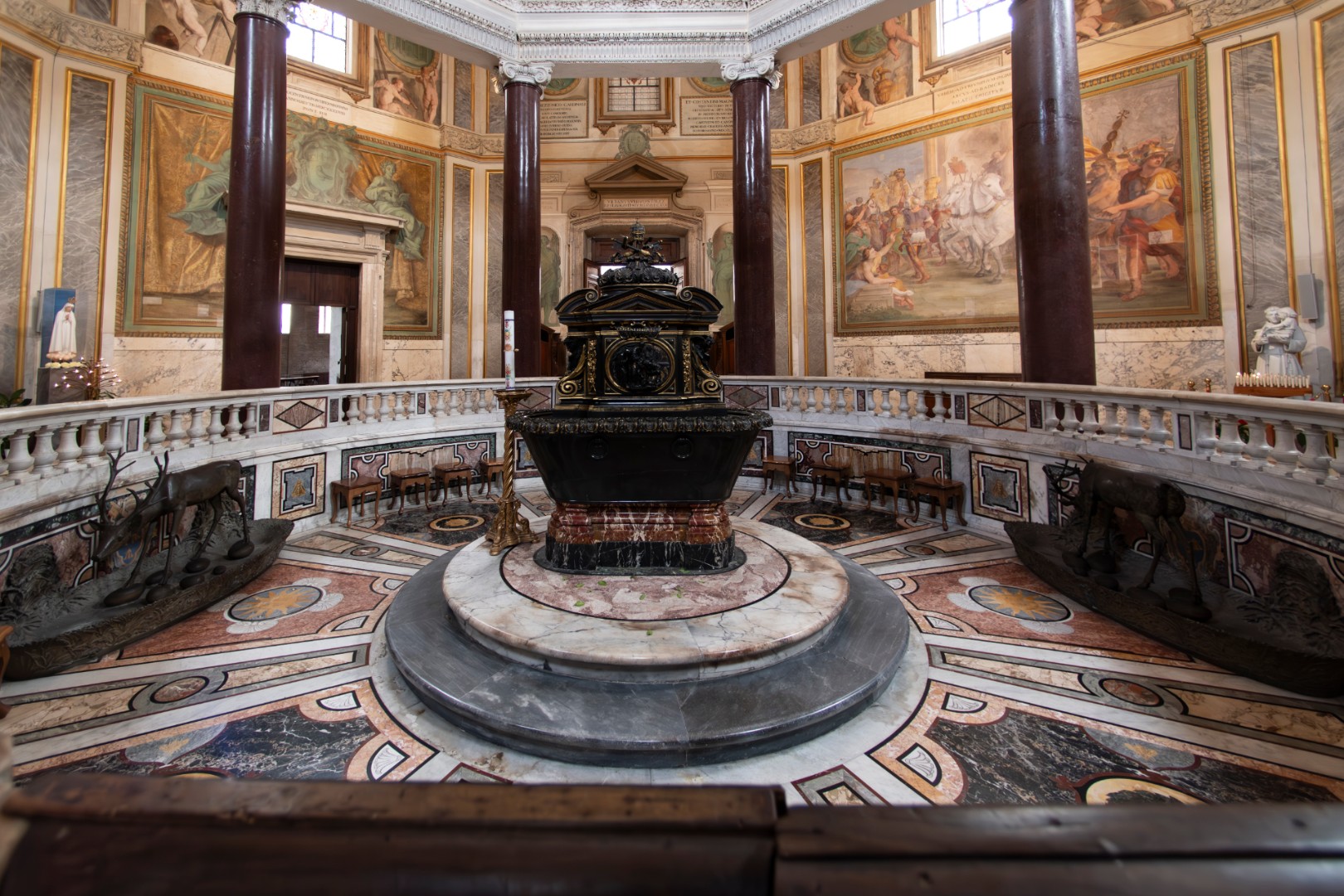Sixtus III’s early Christian structure was further modified in the Baroque age.
Along the walkway, there are five seventeenth-century frescoes recounting the deeds of Constantine.
The narrative begins with the Apparition of the Cross – in reality the Constantinian monogram with the Greek initials of Christ – which, according to tradition, occurred in October 312 in the area of Saxa Rubra, Grottarossa, along the Via Flaminia.
It continues with the battle of the Milvio Bridge, which ended shortly afterwards, on 28 October 312, in which Maxentius, an enemy of Constantine, was defeated and killed.
We then see the entry into Rome of the victorious Constantine, for whose triumph the Roman Senate had the triumphal arch erected near the Colosseum, where it is stated that the emperor was inspired “by divinity” - thus eliminating any idea of polytheism.
The fourth fresco depicts the overthrow of idols and the exaltation of the Cross, also referring to the excavations of Helena, the emperor's mother and first “archaeologist”, who had the basilica of the Holy Sepulchre erected in Jerusalem and brought the earth from that excavation together with the relics of the cross to Rome, so that those who went to the basilica of the Holy Cross could experience a “Roman” pilgrimage to Jerusalem.
The final fresco depicts the Council of Nicaea, the first ecumenical council of 325, which was convoked and presided over by Constantine himself, perhaps indeed as a catechumen. In the painting, the emperor burns the accusations of the Arians against the Catholic faith and kisses the wounds of the martyrs.
Above are frescoed roundels with busts of Constantine and Pope Urban VIII, flanked by the churches he restored in the Baroque age: Saint Peter’s in the Vatican, Saint Paul’s on the Via Ostiense, San Lorenzo al Verano, Saints Peter and Marcellinus on the Via Merulana, Santa Croce in Gerusalemme and the Lateran baptistery.













